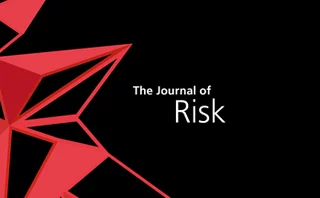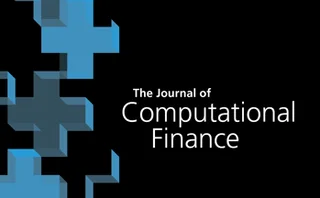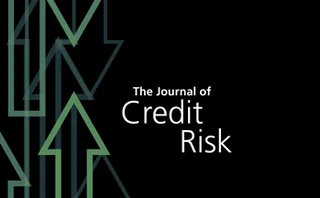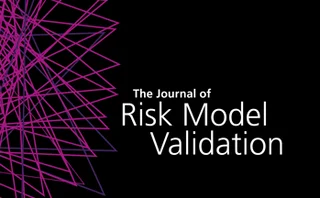Original research
An alternative statistical framework for credit default prediction
This study compares the gradient-boosting model with four other well-known classifiers, namely, a classification and regression tree (CART), logistic regression (LR), multivariate adaptive regression splines (MARS) and a random forest (RF).
Risk-neutral densities: advanced methods of estimating nonnormal options underlying asset prices and returns
This work expands the analysis in Cooper (1999) and Santos and Guerra (2014), and the performance of the nonstructural models in estimating the "true" RNDs was measured through a process that generates "true" RNDs that are closer to reality, due to the…
An empirical evaluation of large dynamic covariance models in portfolio value-at-risk estimation
This research develops a framework adopting conditional covariance modeling combined with various de-noising methods to estimate the portfolio VaR and proves the importance of DCC over the sample rolling method widely used in the industry.
Procyclicality mitigation for initial margin models with asymmetric volatility
In this paper, we explore the procyclicality of initial margin requirements based on VaR volatility models.We suggest procyclicality can be reduced using a three-regime model rather than using ad hoc tools.
A new dynamic hedging model with futures
This paper proposes a new econometric model for the estimation of optimal hedge ratios (HRs): the Kalman filter error-correction model (KF–ECM).
A regime-switching factor model for mean–variance optimization
In this paper the authors formulate a novel Markov regime-switching factor model to describe the cyclical nature of asset returns in modern financial markets.
The impact of shareholders’ limited liability on risk- and value-based management
In this paper, we analyze the consequences of shareholders’ limited liability for the risk- and value-based investment decisions made by a nonlife insurer under solvency constraints.
Numerical simulation and applications of the convection–diffusion–reaction
This paper develops two local mesh-free methods for designing stencil weights and spatial discretization, respectively, for parabolic partial differential equations (PDEs) of convection–diffusion–reaction type.
Monte Carlo pathwise sensitivities for barrier options
In this work, we present a new Monte Carlo algorithm that is able to calculate the pathwise sensitivities for discontinuous payoff functions.
Option pricing in exponential Lévy models with transaction costs
We present an approach for pricing European call options in the presence of proportional transaction costs, when the stock price follows a general exponential Lévy process.
An adaptive Monte Carlo approach
This paper proposes a new, flexible framework using Monte Carlo methods to price Parisian options not only with constant boundaries but also with general curved boundaries.
Estimating the contagion effect through the portfolio channel using a network approach
This work studies contagion risk through the portfolio investment channel using network analysis and simulation on bilateral cross-country data.
Current expected credit loss procyclicality: it depends on the model
This work looks at a wide range of models to test the degree to which CECL is procyclical for different types of model.
A sensitivity analysis of the alpha factor
In this paper, we investigate the alpha factor’s sensitivity to key model parameters under stylized portfolio assumptions in order to better understand its complex characteristics. Our analysis is based on the numerical simulation of alpha sensitivities…
Introducing stylized facts on electricity futures through a market impact model
This paper provides an alternative way to introduce the stylized facts on electricity futures.
International Financial Reporting Standard 9 expected credit loss estimation: advanced models for estimating portfolio loss and weighting scenario losses
In this paper, the authors propose a model to estimate the expected portfolio losses brought about by recession risk and a quantitative approach to determine the scenario weights. The model and approach are validated by an empirical example, where they…
Incremental value-at-risk
This paper proposes a novel method for estimating future operational risk capital: incremental value-at-risk (IVaR)
Measuring economic cycles in data
This paper determines if enough data is available for forecasting or stress testing, a better measure of data length is required.
The pricing of firm-specific risk in emerging markets
This paper finds that a zero-investment strategy that goes long (short) in the highest (lowest) quintiles of firm-specific risk earns overall positive excess returns across twenty-one emerging markets.
Portfolio management of Commodity Trading Advisors with volatility-targeting
This paper shows analytically that a volatility-targeted allocation methodology improves the risk-adjusted performance of portfolios under a broad set of assumptions regarding the serial correlation of returns and the dependence of the expected Sharpe…
Connecting equity and foreign exchange markets through the WM “Fix”: a trading strategy
In this paper, the authors show the connection between equities and foreign exchange markets via this window, they leverage this connection using an algorithmic trading strategy and rank various statistical techniques used to make predictions for trading…
An internal default risk model: simulation of default times and recovery rates within the new Fundamental Review of the Trading Book framework
This paper presents a new default risk model for market risk that is consistent with these requirements. The recovery rates follow a waterfall model that is based on a minimum entropy principle.








